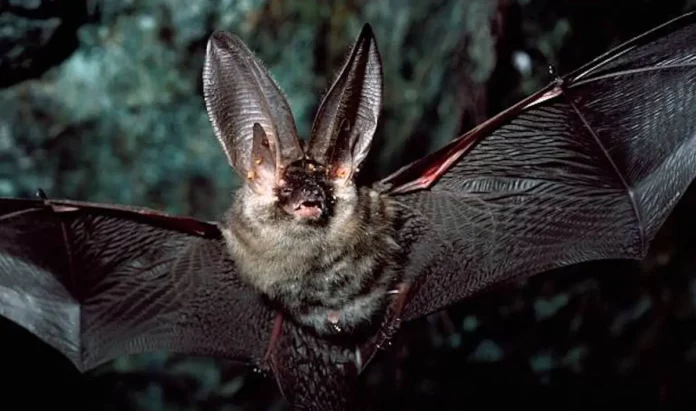In a last-ditch effort to conserve a species that has been brought dangerously close to extinction by the fungal illness white-nose syndrome, Northern long-eared bat is listed as endangered species by Biden administration.
“White-nose syndrome is decimating cave-dwelling bat species like the northern long-eared bat at unprecedented rates,” said Martha Williams, director of the U.S. Fish and Wildlife Service.The agency is “deeply committed to working with partners on a balanced approach that reduces the impacts of disease and protects the survivors to recover northern long-eared bat populations,” she said.
The illness has killed millions of bats and infected 12 different species since it was first discovered in the United States in 2006. With projected reductions of 97% or more in impacted populations, the northern long-eared bat is one of the worst affected species. The bat may be found in 37 eastern and midwestern states, as well as parts of Canada and Washington, D.C. White-nose syndrome affects bats that hibernate in caves and abandoned mines, giving them white, fuzzy markings on their wings, muzzles, and ears.
They emerge from hibernation early as a result, and they occasionally fly outside. They could finally get hungry after using up their winter fat reserves. By 2025, the whole geographic range of northern long-eared bats is anticipated to be infected with the illness, which has already reached almost 80% of that area.
Tricolored Bat also Endangered like Northern Long-eared Bat
Another species that has been completely wiped off by the fungus is the tricolored bat, which the government intended to label as endangered in September. The little brown bat, a third species, is currently being evaluated for possible listing. It is estimated that bats contribute $3 billion yearly to U.S. agriculture by consuming bugs and fertilising some plants. The Fish and Wildlife Service designated the northern long-eared bat as endangered in 2015. The government asked for an endangered classification in March as the species’ situation deteriorated, and it considered public opinion before deciding to take further action. The new policy will go into effect on January 30, 2023.
“This species is in dire straits but we never want to give up hope,”
“We can do amazing things when we work hard and have legal protections in place to protect these small colonies that are left.”
Winifred Frick, chief scientist with Bat Conservation International
In many cases, the service identifies “critical habitat” areas considered particularly important for the survival of an endangered species. Officials decided against doing so for the northern long-eared bat because habitat loss isn’t the primary reason for its decline, spokeswoman Georgia Parham said. Calling attention to their winter hibernation spots could make things worse, she added.
The emphasis of recovery efforts will be the forested areas where the bats spend the summer months hibernating, typically lonesome or in small groups, nestled in cracks and crevices in the bark of trees. They emerge at dusk and eat moths, beetles, and other insects as food.
According to the Endangered Species Act, federal agencies must confer with the Fish and Wildlife Service before funding or approving projects like highway building, managed burns, and timber harvesting to ensure that the projects won’t endanger the survival of any listed species.
Actions that could result in inadvertent killings may be permitted but will need authorization for non federal landowners. The Fish and Wildlife Service announced that it will also collaborate with wind energy providers to lessen the possibility of bats colliding with turbines. Approximately half of the northern long-eared bat’s range is already threatened by these collisions, and as wind energy production spreads, this hazard is anticipated to increase.
According to Karen Herrington, Midwest regional coordinator for vulnerable and endangered species, the agency has authorised almost two dozen plans permitting wind energy and forestry projects to proceed after measures to make them more bat-friendly were made.By reducing blade rotation at the time of year when bats migrate and when the wind is at its weakest, operators may reduce the risk.
White-nose syndrome is still being researched, including the creation of a vaccine. More than $46 million has been allocated by the service for the effort, which involves around 150 agencies, businesses, and Native American tribes.

